“The Russian economy is on track to be cut in half,” Joe Biden said in March last year, as he heralded sanctions brought against Russia after its full-scale invasion of Ukraine.
Annalena Baerbock, the German foreign minister, vowed that sanctions were “hitting the Putin system … at its core of power”. Liz Truss, her counterpart in the UK at the time, forecast that Vladimir Putin’s oligarchs would have nowhere to hide. EU sanctions, the European Commission president, Ursula von der Leyen, said, “are working to cripple Putin’s ability to finance his war machine”.
The language before the invasion had been no less assertive. At a briefing in January 2022, US state department officials said Washington was prepared to implement sanctions “with massive consequences that were not considered in 2014 [when Russia annexed Crimea]. That means the gradualism of the past is out, and this time we’ll start at the top of the escalation ladder and stay there.”
The Institute for International Finance (IIF) predicted a 15% fall in Russian GDP in 2022. JP Morgan envisaged a 12% contraction. Russia’s own technocrats privately warned Putin of a possible 30% fall.

The reality was somewhat different, reflecting what analysts say was a hubristic over-confidence in the west about the speed with which sanctions that were agreed with unprecedented coordination by the G7 could damage Russia.
The Russian economy contracted by only 2.2% last year. Unemployment, according to admittedly dubious official figures, now stands at 3.7 %. The construction sector has been able to grow significantly even if the car and electronics industries have suffered. A bumper harvest has driven growth in the agricultural sector.
Russia is now forecast by the International Monetary Fund to grow faster in 2023 and 2024 than the UK. It is hardly financial apocalypse now.
As the war approaches its one-year anniversary on 24 February, the debate about whether sanctions are effective has intensified.
Defenders of sanctions say the ruble and headline gross domestic product are dreadful indicators, partly because Russian statistics are either classified or manipulated as part of the war effort. “Please do not ask me about GDP figures. They do not matter,” said Elina Ribakova, the deputy chief economist at the Institute of International Finance, a global industry body.
Vladimir Milov, a former Russian deputy energy minister and author of a Martens Centre report on sanctions, said it may be more instructive to track a dozen or so “soft indicators” such as alcohol sales, divorce rates, shoplifting, spending on food, opinion polls, bank customer sentiment or tax revenues.
“Don’t look at the watch every five minutes to see if sanctions are working. Exercise strategic patience,” said Milov, who is also an ally of the jailed Russian opposition leader Alexei Navalny
Agathe Demarais, the author of Backfire, a study of US sanctions, said: “This is a marathon rather than a sprint, but financing the war is getting more difficult.”
Economists at the Kyiv School of Economics go further, arguing that a decisive turning point may already have been reached as a growing Russian fiscal deficit – spurred by extra defence spending and collapsing hydrocarbon revenues – forces Russia’s central bank to eat up its reserves.
Initial financial blitzkrieg
“It is understandable that the west got carried away at the beginning, leading to false expectations of a palace coup,” said Charles Lichfield, a deputy director of the Atlantic Council, a US thinktank.
After all, Russians started to rush for the cash machines, fearing a run on the banks. The rouble tanked, falling from from about 70-75 against the dollar to nearly 140.
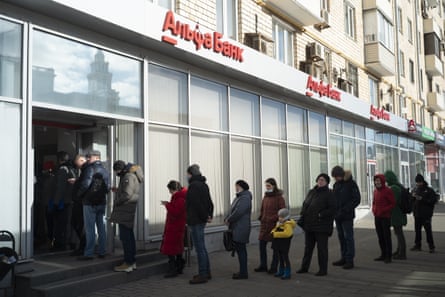
The gates to the oligarchs’ European playgrounds were padlocked, their ostentatious toys put into dry dock. The loss of mobility and respectability was a heavy blow, particularly in London where the Conservative government suddenly turned on the Russian rich after decades of laxity and reputation laundering. Within about four months, Russian assets worth about €13.8bn (£12.3bn) had been frozen.
Even the smallest transactions were at risk of getting stuck in correspondent bank accounts for weeks if not months, as international banks became wary of facilitating transfers by Russian clients. In total the EU put sanctions on 1,386 individuals and 171 entities.
Hundreds of the larger western firms from McDonalds to BP to IT multinationals “self-sanctioned” themselves by suspending or winding down their Russian operations, even if some did not actually leave. The German chemical firm BASF suffered a $7.9bn (£6.5bn) writedown in the process, even if it hopes to pass it on to the taxpayer.
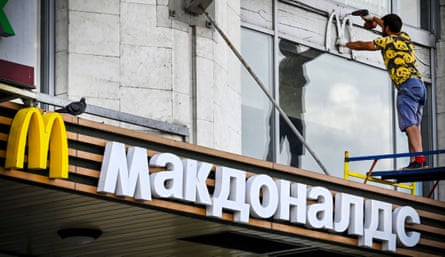
But in the key opening exchange of the sanctions battle, the Russian central bank, ironically largely staffed by liberal pragmatists opposed to the invasion of Ukraine, got the better of the west. On 28 February, the west tried to ambush Russia by simply freezing what was reported by the country’s central bank to be roughly $300bn or (40%) of its total foreign exchange reserves held overseas. The remainder was not held in western currencies. “The aim was to make it harder to defend the currency, increase the cost of financing the war and fuel inflation,” said Demarais.
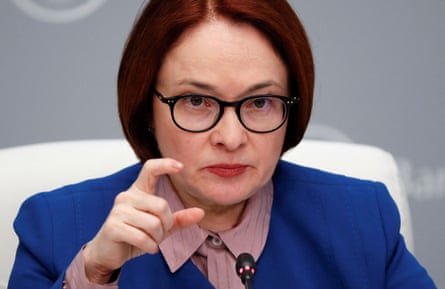
But the Russian central bank’s governor, Elvira Nabiullina, responded decisively, raising the key interest rate to 20% on 28 February, effectively shutting down mortgages and corporate lending but making deposits extremely attractive. It deterred citizens from panicking and withdrawing all their money from their accounts. On 7 March, for the first time in the modern Russian history, the central bank completely banned the sale and withdrawal of dollars and euros deposited before 24 February. Russia also negotiated for some its banks – notably Gazprombank – to remain in the global financial messaging system Swift because they handled payments related to oil and gas exports on which the EU were heavily reliant. After a short period of stress in March 2022, structural liquidity returned more or less to pre-sanctions levels. By June the rouble had stabilised.
Once its initial financial blitzkrieg – prepared in secret in the US Treasury in the months before war – had been repelled, the west had to revise its strategy, accepting implicitly it had not quite started at the top of the sanctions ladder and there were further rungs to climb. The second phase was going to be more a war of attrition, constant adjustment and consensus-building across the EU.
The European Commission went on to a sanctions war footing, according to a study by the Danish Institute for International Studies. “Formal processes that would traditionally take several weeks were concluded within a day,” it found.
But flaws in the process appeared. Since EU sanction packages require unanimity, ideological outliers like Hungary held massive leverage. Viktor Orbán’s personal connection with specific Russian oligarchs became apparent. For instance, in September last year the Hungarian prime minister asked, probably in return for favours by Putin, for three Russian oligarchs to be removed from the EU sanctions list. Before the 15 March renewal deadline, Orbán has lobbied to remove the same trio plus an other six. At successive European Council meetings, his ministers have threatened use of the veto, delaying key sanctions decisions. Most recently, Orbán breezily insulted Ukraine as “a no man’s land akin to Afghanistan”.
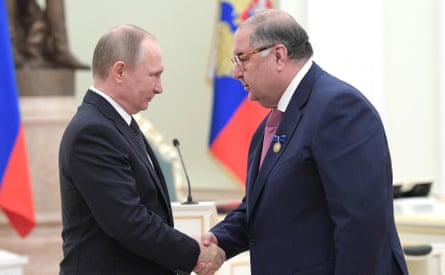
Some EU states found they did not have the laws, compliance departments or procedures to implement the sanctions agreed in Brussels. Only now is the European Commission working with member states for instance to establish a single contact point for enforcement and implementation issues with cross-border dimensions.
Differences in the vigour with which sanctions were enforced became striking. EU figures show Greece had frozen only €222,000 in Russian assets and Malta only €200,000. The same two countries in April had tried to block a ban on Russian flagged ships entering EU ports. Austrian companies have hardly rushed to leave Russia. One estimate says 43 Austrian firms have stayed and only two left completely. Belgium has lobbied to keep the 500-year-old diamond industry in Antwerp open to Russia’s Alrosa mining company.
Among Nato members, Turkey’s refusal to join the sanctions coalition has become a major problem.
By the third quarter of 2022, Russian imports from Turkey had surged to over $1bn a month, roughly double the figure for the same period the previous year.
Turkey became a route for Russia to import vital western-produced goods such as manufacturing parts. Some economists for instance have noticed a mini boomlet in trade between Italy and Turkey, suggesting enterprising Italian traders regard Istanbul as a useful access point into forbidden Russian markets.
US Treasury sources say they have now elevated Turkey’s approach to trade with Russia to an issue of prime importance in the bilateral relationship.
The US is also looking askance at another ally, the United Arab Emirates. Research by a team of Berlin-based data analysts examining more than 500,000 bank transactions after the war started found that, in terms of value, 66% of withdrawals by non-resident customers of Russian banks went to beneficiaries located in the UAE. This represents a 40% rise on the previous year.

Putin’s throw’s energy poker game lead with dud card
The surprising resilience of the Russian economy is not primarily due to the technical professionalism of central bank officials or murky sanctions busting, but instead a blindingly obvious structural flaw in the sanctions: Europe’s reliance on Russian oil and gas exports, the source of 40% of Russian budget revenue.
“Not imposing a Russian export embargo early on led to record high trade and fiscal surpluses that gave Putin’s regime a huge financial cushion, enough to sustain many months of the war,” said Oleg Itskhoki, a Russian-American economist. “Only Putin’s imports were boycotted, while his exports continued. As a result the Russian car and electrical industry collapsed, but not the export of oil and gas.”
Various groups of western economists, including Rüdiger Bachmann, Moritz Schularick, Ben Moll and Christian Bayer, tried through March and April to persuade German politicians that cutting off the supply of Russian energy would not lead the German economy to crash.
Moll recalled: “Soon after the war started, statements were being made by German politicians that an energy embargo would have dramatic economic consequences. For instance, the economics minister said there would be mass unemployment and poverty.
“We just thought it was important to look at the data and think this through systematically so we put together a team of energy economists as well as micro- and macroeconomists and concluded it might lead to a recession between 0.5 and 3 % but not economic Armageddon. Not all of us agreed with an energy embargo. But the unions and industry lobby denounced our analysis and the chancellor called us ‘irresponsible’ on national TV, a reflection of the large influence of corporate Germany.”
Moll believes in retrospect his analysis of the system’s flexibility and adaptability has been proven right.
But the EU could decouple itself from Russian energy only at the speed Germany, the major economy most vulnerable to Putin’s energy blackmail, was prepared to tolerate.
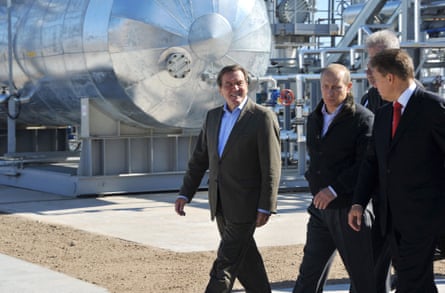
It took until June, after private lobbying by the US and evidence of war crimes in Ukraine, for the EU in its sixth sanctions package to agree to an EU-wide ban on Russian oil exports. But the ban was only to come into force in two delayed phases. The ban on the purchase, import or transfer of Russian seaborne crude oil was not to apply until 5 December and the ban on other refined oil products such as diesel came in on 5 February.
The price of Europe’s caution is well known. With the exception of 2020 and 2018, oil and gas had provided 60% of Russian goods exports in every year since 2002. But the early summer of 2022 was a total bonanza for the Russian treasury, as it benefited from the record surge in energy prices. In March, Russia was making €1bn a day from energy exports. Oil and gas increased to 60% of Russian fiscal revenues, up from 40%. Germany alone has bought €24bn of Russian fossil fuels since the invasion.
Europe funded the Russian war machine that it denounced. The surplus on Russia’s current account for the year was $227.4bn – a 86% increase on the previous year and more than double the previous record. That helped strengthen the rouble, making imports cheaper. This in turn helped to gradually bring down inflation, taking some pressure off the real incomes of the ordinary Russian population.
By the summer Russian treasury coffers were so bloated that Putin felt confident enough to launch a counterattack by slowing gas supplies to Europe. With 40 % of Europe’s gas coming from Russia, he demanded in April that any country refusing to pay for its gas in roubles would be cut off. Europe huffed but complied. By June he started tampering with the gas flow through the Nord Stream 1 pipeline from Russia into Germany. He first cut deliveries through the pipeline by 75%, from 170m cubic metres a day to roughly 40m. In July, the pipeline was shut for 10 days, citing the need for essential maintenance work. On reopening, the flow was reduced to 20m cubic metres a day.
Then on 26 September an as yet unidentified intelligence service blew up the pipeline and the neighbouring Nord Stream 2 pipeline – which had yet to go into service - leaving a mangled wreck and an unsolved crime scene at the bottom of the Baltic.
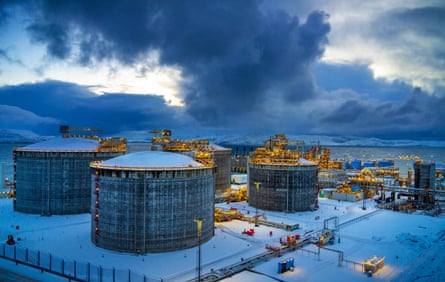
“Putin shot himself in the foot because by turning off the gas tap, he completely changed the calculus in the European Union and gave the impetus to Europe to diversify away from Russian gas,” Demarais said. “He made the decision for Europe a lot easier.”
Through a mixture of planning and good fortune, Europe has, in the space of six months, largely weaned itself off Russian gas. Renewables have been boosted, the lives of nuclear power stations extended and liquid natural gas terminals built at lightening speed. The European Commission sent out search parties for alternative sources of energy ranging from Morocco, Qatar, Angola, Venezuela, Norway and Nigeria. It was a form of Putin-inspired “shock therapy”.
In another blow to Putin, “General Winter”, once assumed to be Russia’s greatest ally, failed to report for duty. Temperatures averaged well above the norm with record highs for winter broken in the Netherlands, Liechtenstein, Lithuania, Latvia, Czech Republic, Poland, Denmark and Belarus. That lowered demand for energy, as did the self-restraint of European consumers rocked by record bills. Gas storage levels in Germany in January were at 90%, the highest level ever for the month.
Russian gas exports to Europe tumbled by more than 75% compared with the prewar period. The daily price of natural gas on the stock exchange Amsterdam Euronext which had peaked at more than €300 a megawatt hour after the invasion, has now fallen well below 100 again, to under €60, still high by the standards of 2020 . Inflation is slowly descending across Europe, and Germany looks to have avoided the widely predicted recession.
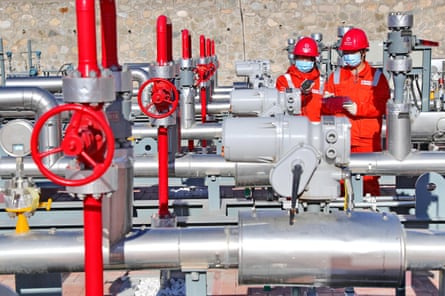
Putin had played his best economic warfare card – cutting gas exports to Europe – and it was a dud, and will remain so next winter if the EU controls demand. In the space of a year, Putin destroyed Russia’s gas bridge to Europe, the centrepiece of Russian postwar economy.
Where do we go from here?
The question now is how quickly he can construct a different bridge to the east, and so keep the Russian finances afloat.
Russia exports natural gas from eastern fields to China through the 2,500-mile Power of Siberia 1 pipeline, but the western fields, which had served the European markets, are not connected to this export route and cannot be easily redirected to China. Eventually a Power of Siberia 2 pipeline will connect the two fields, but the estimated completion date is 2030. China is also not such a profitable market. Russia was estimated to be charging $3 a metric million British thermal unit (MMBtu) for deliveries to China via the Power of Siberia pipeline, while the estimated charge for deliveries to Europe had been sold at $10-$25/MMBtu.
Putin is also in danger of being screwed to the floor over oil, his crown jewel. After persistent US Treasury lobbying, the west supplemented the EU ban on Russian crude oil exports by introducing an unprecedented market intervention that seeks to set a world wide price cap of $60 a barrel for Russian seaborne oil. From 5 December, the same date as the EU import ban, any firm providing payments, insurance, financial services, or brokering, bunkering, piloting services to a ship carrying Russian oil could not receive insurance cover if the oil was being purchased for more than $60 a barrel. If the US or EU catches any company misrepresenting the price or submitting a fraudulent attestation, the G7 can impose sanctions on that company. The UK proposes fines of $1.2m.
Putin blustered, saying he would not supply oil to any country for five months that complied with this price regime from 1 February. But this may be a bluff. For China and India do not need to endorse the cap explicitly, but they can take advantage of its existence and their purchasing power to negotiate heavy price discounts in comparison with Brent crude.
The price cap is in its infancy, and since the price of seaborne Urals crude averaged $49.48 in January, below the $60 cap, EU tankers – mainly Greek – can legitimately carry on transporting oil to China and India. Reports suggest crude oil loading from Russian ports have reached a multi-month high. At best the cap has had the effect of institutionalising price discounts. At worst it is proving toothless. Ukraine and its expert team advisers on sanctions led by the former US envoy Michael McFaul say the cap needs to be halved especially if its purpose is to blow a hole in Russia’s budget.
But the US Treasury, in setting the cap, was balancing different objectives: reducing Russia’s income and keeping enough supplies on the seas to avoid another spike in oil prices. That requires a perilous assessment of the price at which Putin decides it is not profitable to extract or export oil. The US is trying to postpone a review of the cap level until March to allow more evidence to be collated.
The Kyiv School of Economics insists the numbers on the Russian dashboard are flashing red. Russia’s monthly fiscal deficit reached a record 3.9tn roubles (£43.3bn) in December and its total budget deficit for 2022 was 3.3tn roubles – or 2.3% of GDP – set against a projected an annual surplus of 1.3tn. Overall spending in 2022 was 7.3tn roubles higher than forecast, presumably due to vast defence spending.
Putin plans to spend 6.3 % of GDP on defence and national security in the 2023 federal budget alone, doubling defence spending to more than 10tn roubles. The question then becomes how long this level of spending can be sustained if energy revenues are falling so fast.
Demarais said the first signs of serious strain would be unplanned debt issuance and the sale of some of its 310bn yuan (£37.5bn), the only currency in Russia’s reserves that can be used for interventions in the foreign exchange market.
Various estimates exist, but some say Russia’s planned spending is probably sustainable on an assumed Urals crude oil pice of $70 a barrel. Russia won’t burn through its stock of yuan assets this year unless the Urals price halves and averages $25 a barrel, according to Bloomberg Economics.
The US bank Citigroup estimates it would only take an average price of $35 to deplete the available yuan resources already in 2023.
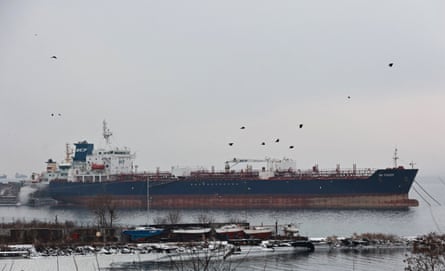
But as the past year has shown, Russia is not sitting idle in the face of a price cap. Learning from its growing ally, Iran, it has assembled an ageing dark fleet of smaller, older ships carrying crude oil mainly to China and India. Evasion will be attempted through multiple means: flags of convenience; the blending of crude; Russian insurance schemes; or the simple manipulation of documents. New crude oil transfer hubs are already emerging. It will depend on whether this covert market grows into a viable alternative to the G7 cap, and the price at which the oil is bought by China.
In the end an international sanctions war is a game of cat and mouse in which both sides look for clues amid the disinformation to try to pre-empt the other’s moves.
Ultimately it is not as decisive as the battlefield, but if the west can stay the course, Putin may yet find his options narrowing. If he survives it will be a huge blow to the power of the dollar, and one that will not go unnoticed in Beijing.

 1 year ago
65
1 year ago
65










 English (US)
English (US)